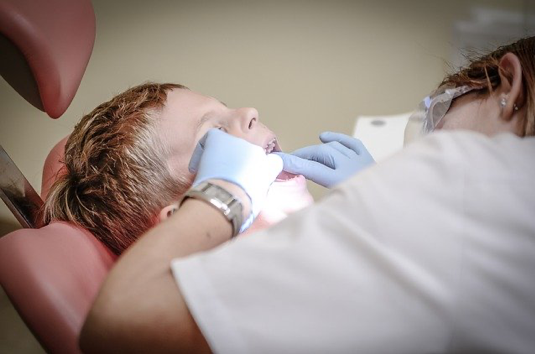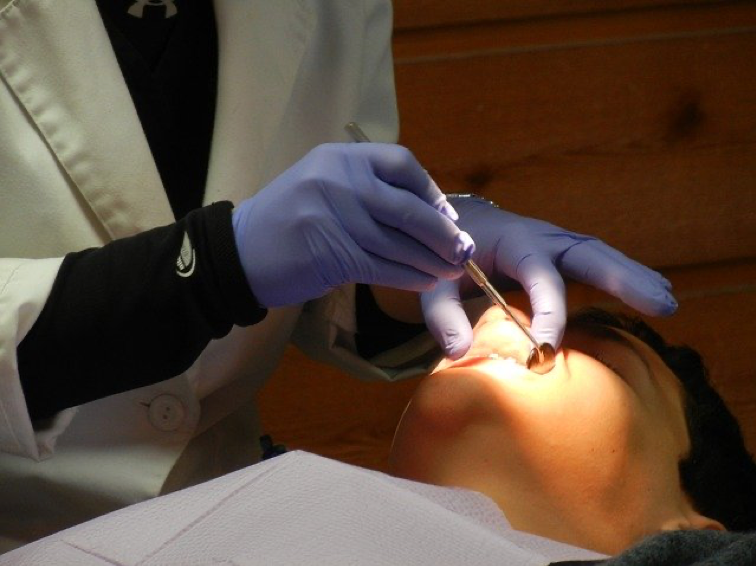Welcome to NYC Dental Orthodontics
NYC Dental Orthodontics offers New York City's best dental care in a comfortable, relaxed environment. Our Board Certified, NYU Fellowship trained orthodontist specialist excels in providing orthodontics treatment to children, teens and adults. We are a leader in nyc orthodontic treatments by employing the best technologies that facilitate patient care, maintaining a safe and comfortable office, and learning about new advances in orthodontic and dental treatment. We are also specialists in emergency orthodontics, emergency retainer repair, and emergency braces.
Conviently Located in Midtown Manhattan:
20 E 46th St
Rm 1301
New York, NY 10017
(Between Fifth Ave & Madison Ave)
Schedule Online Now - Appointments Available.
![]()
For SAME DAY & Emergency Appointments, Call (646) 760-8028
Our Blog Posts Are Below:
Best Types of Braces 2023: Which is Right for You?
What are the Best Types of Braces in 2023?
Traditional Metal Braces
 Traditional metal braces are the most common type of braces and have been used for decades to straighten teeth. They consist of metal brackets that are glued to the teeth and connected by wires. Metal braces are highly effective and can treat a wide range of dental issues, from mild to severe. While metal braces are the most noticeable type of braces, they are also the most cost-effective. They are durable and can withstand a lot of pressure, making them an ideal option for those who play sports or engage in other physical activities.
Traditional metal braces are the most common type of braces and have been used for decades to straighten teeth. They consist of metal brackets that are glued to the teeth and connected by wires. Metal braces are highly effective and can treat a wide range of dental issues, from mild to severe. While metal braces are the most noticeable type of braces, they are also the most cost-effective. They are durable and can withstand a lot of pressure, making them an ideal option for those who play sports or engage in other physical activities.Ceramic Braces
Ceramic braces are similar to traditional metal braces but use tooth-colored or clear brackets and wires that blend in with your teeth. This makes them less noticeable than metal braces and an ideal option for those who want a more discreet treatment option. Ceramic braces are also highly effective and can treat a range of dental issues, from mild to severe. However, they are more fragile than metal braces and require extra care to avoid damage.Lingual Braces
Lingual braces are similar to traditional metal braces but are placed on the back of the teeth instead of the front. This makes them virtually invisible, an ideal option for those who want a discreet treatment option. Lingual braces can treat a range of dental issues, but they are not suitable for everyone. They can be more challenging to clean and may take longer to adjust to than other types of braces.Invisalign Clear Aligners
Invisalign clear aligners are a popular alternative to traditional braces. They consist of a series of clear plastic trays that fit over your teeth, gradually moving them into the correct position. Invisalign aligners are nearly invisible and can be removed for eating and cleaning.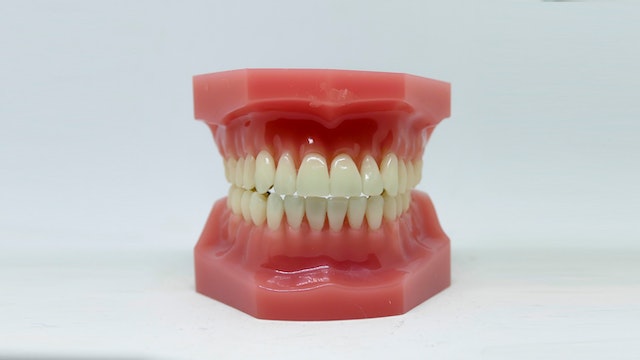 Invisalign is an ideal option for those who want a more discreet treatment option and can treat a range of dental issues, from mild to moderate. However, they may not be suitable for those with more severe dental issues.
Invisalign is an ideal option for those who want a more discreet treatment option and can treat a range of dental issues, from mild to moderate. However, they may not be suitable for those with more severe dental issues.Best Types of Braces 2023: Which Type of Braces is Right for You?
Choosing the right type of braces depends on your dental needs, lifestyle, and personal preference. If you’re considering orthodontic treatment, contact NYC Dental Orthodontics today. Our team of experienced orthodontists will work with you to determine the best type of braces for your specific needs. We also offer a range of other orthodontic treatments, such as clear aligners and lingual braces, to provide personalized care to each of our patients. NYC Dental Orthodontics20 E 46th St Rm 1301
New York, NY 10017
(646) 760-8028
The Benefits of Orthodontic Treatment: Why Straight Teeth Matter
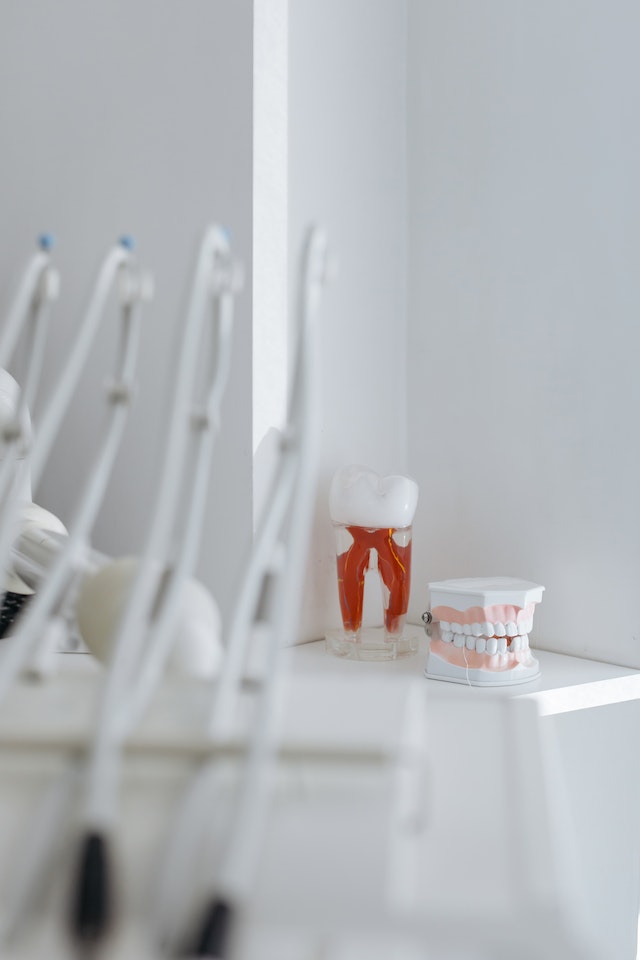
Orthodontic treatment is often associated with improving the appearance of crooked teeth, but there are many more benefits beyond just aesthetics. Straight teeth have several positive impacts on your overall health and well-being, from improved oral hygiene to increased self-confidence. As a family orthodontics practice in New York City, we believe in the importance of understanding the benefits of orthodontic treatment to help our patients make informed decisions about their dental health.
Improved Oral Hygiene
One of the most significant benefits of orthodontic treatment is improved oral hygiene. Straight teeth are easier to clean and maintain, reducing the risk of gum disease and tooth decay. Crooked teeth can create hard-to-reach areas where food particles and bacteria can accumulate, leading to plaque buildup and bad breath. With proper orthodontic treatment, teeth can be realigned and made easier to clean, leading to better overall oral health.
Better Bite and Jaw Alignment
Orthodontic treatment can also improve bite and jaw alignment. Misaligned teeth can lead to an uneven bite, causing discomfort and pain when chewing or speaking. This can also lead to jaw pain and headaches. By correcting the alignment of your teeth, orthodontic treatment can help reduce these symptoms, leading to a more comfortable and pain-free bite.
Improved Speech
Orthodontic treatment can also improve speech. Crooked teeth can affect the way you speak, causing lisps or other speech impediments. By straightening your teeth, orthodontic treatment can improve the way you speak, leading to clearer and more confident communication.
Increased Self-Confidence
Beyond the physical benefits, orthodontic treatment can also lead to increased self-confidence. Crooked or misaligned teeth can often cause people to feel self-conscious about their smile, leading to a lack of confidence in social situations. By straightening teeth, orthodontic treatment can improve the appearance of your smile, leading to increased self-esteem and confidence.
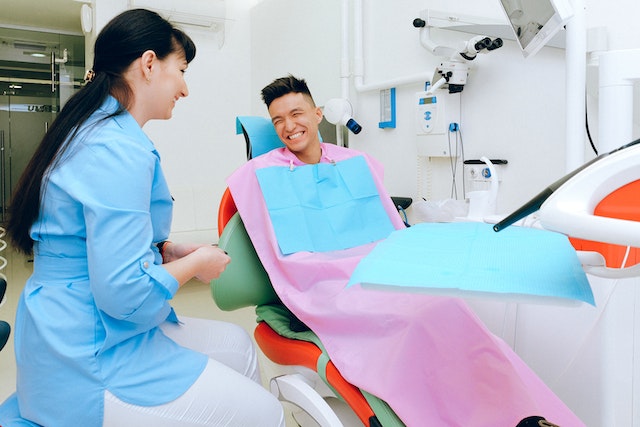
Benefits of Orthodontic Treatment: Conclusion
Orthodontic treatment offers many benefits beyond just improving the appearance of your teeth. From improved oral hygiene and better bite and jaw alignment to increased self-confidence and improved speech, orthodontic treatment can have a significant impact on your overall health and well-being.
Contact Us Today
At NYC Dental Orthodontics, we are dedicated to providing top-quality orthodontic treatment to our patients. With our personalized care and a range of treatment options, we strive to achieve the best possible results for each of our patients. If you are interested in orthodontic treatment or have any questions about our services, please contact us today.
NYC Dental Orthodontics
20 E 46th St Rm 1301
New York, NY 10017
(646) 760-8028
Types of Orthodontic Emergencies
There are various types of orthodontic emergencies. However, these emergencies are not common. In this article, you will learn about different types of orthodontic emergencies. Before we go any further, you should know what orthodontics is.
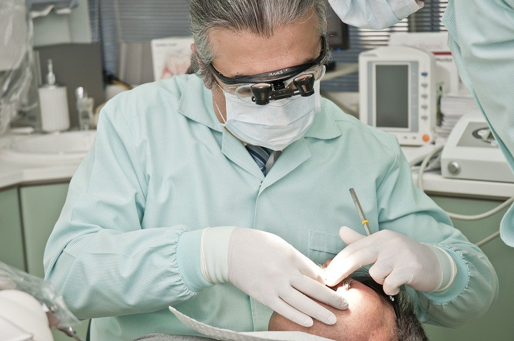
(Source)
Orthodontics is the method for straightening the teeth. This specific medical practice provides an amazing smile and improves the functionality of your teeth. The orthodontist will use braces to perform their procedures and align your teeth. If you want to undergo the procedure, the professional orthodontist will apply various components to your mouth. These components can include metal and rubber pieces. This article is about types of orthodontic emergencies and how you can solve them.
Types of Orthodontic Emergency
1. Broken Bands, Brackets, or Wires
Sometimes, after placing the braces, you suffer from pain because of misuse. For instance, you constantly play with your braces or eat foods such as candy or bubble gum. The result of your eating habits loosens the wires, bands, and brackets in your teeth. When this happens, it pokes inside your mouth and causes injury.
Also, these issues will waste a lot of your time. You will need to visit the orthodontist again, so they can fix them. However, you can reduce the issue by consuming safe foods and following the guidelines suggested by the orthodontist.
When the bracket or band shows signs of breaking from the wire, then you should avoid touching it. If you feel irritation from the wire sticking out, then apply some orthodontic wax. Orthodontic wax provides instant relief until you visit the orthodontist. If the piece completely breaks off, then keep that piece along when going to visit the orthodontist. Moreover, if you “fix” the problem at home, you still need to visit the doctor. They will permanently solve the problem.
2. Tie, Bracket, or Wire Moves from its Place
When you chew or move your mouth to talk, your teeth will start to adjust with the braces. Your teeth contain an archwire that moves from its place inside the mouth and starts to poke into your cheeks. Before it leads to any injury, divert the tip of the wire to a comfortable position.
For that, you need a pencil eraser or a Q-tip. You can also use tweezers for adjusting the ties or wires, bringing them back to the original position. When you place the wires in the right position, it will reduce the risk of injury. And then, you can rush to the doctor without any additional damage.
3. Tooth Loosening or Tooth Pain
Many people will find it frightening when their teeth loosen up. However, loosening teeth indicates that the process is working fine. When your teeth start to move from the old position into the new one, they tend to move. This causes them to loosen up. Because your teeth move, your mouth will feel tender for a while. The best way to find relief is by adding a teaspoon of salt to the water and rinse your mouth for 30 seconds. You can soothe your jaw with a warm washcloth or heating pad. Furthermore, anti-inflammatory and pain relievers can help you reduce the pain in the tooth. Medicines such as ibuprofen or Tylenol also tend to help.
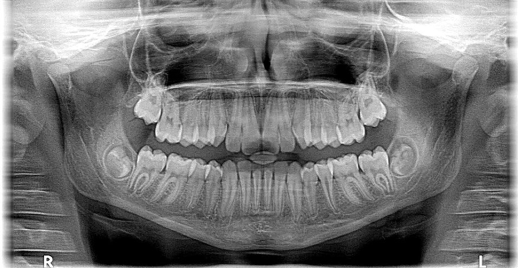
(Source)
4. A Broken Retainer
The metal or plastic pieces of the retainers might move from the position, bend, or break into pieces. If that happens, you should collect all the pieces and visit the orthodontist. Orthodontists can repair the retainer if they have original pieces. So place the pieces in a plastic bag to keep all of them together. Furthermore, if you feel that the retainer is improperly fit or strain, you should remove the retainer and head to your doctor. They will fix the problem and place back the retainers.
5. Swallowing the Part
It is possible that you may swallow the pieces from your retainer. But, there is no need to panic about it. Retainers usually pass through your digestive system and exit the body without any harm. However, if you are choking or unable to breathe due to blockage, you should immediately seek medical help.
Types of Orthodontic Emergencies: Conclusion
Orthodontic treatment is a safe and comfortable procedure to straighten your teeth and bring that hollywood-style smile that you always wanted. However, it is possible that you may feel tender, sore, pain, and irritation in the jaw, mouth, and teeth. Especially when the first time an orthodontist places the braces, they will give your teeth and mouth to adjust with the changes. With time, your mouth will adjust with the braces making you feel normal.
At NYC Dental Orthodontics, we offer a comfortable environment and perform the procedures with modern and high-quality tools and instruments. Our highly qualified team of dentists will provide the best service to protect your teeth.
If you have an orthodontic emergency, contact us as soon as possible:
NYC Dental Orthodontics
20 E 46th St Rm 1301
New York, NY 10017
(646) 760-8028
Braces Maintenance: Taking Care Of Your Braces
What’s the best braces maintenance methods? Braces are among the most common dental accessories, and many Americans get them every year. There are different purposes of braces, and you will come across different types as well. The main point about getting braces is maintenance. Many people are not consistent with the maintenance of their braces, which could lead to major issues.
No matter what type of braces you wear, you should take effective care of them. This will help you get rid of them as soon as possible. To learn more about maintaining braces, read further below!
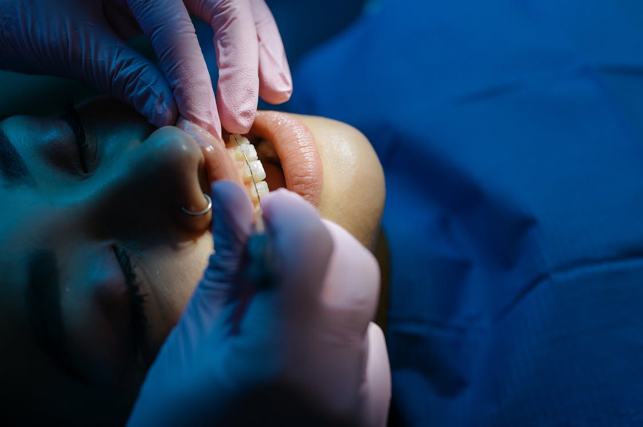
(Source)
The Importance of Braces
There are many benefits of getting braces. Yes, you may know of braces as important for improving your smile, but they also help correct misaligned and overcrowded teeth. Not getting braces could cause a malocclusion, which is an intense plaque around the misaligned teeth, which could become difficult to remove later on. This is why it is very important to wear braces and take effective care of them.
How to Take Care of Your Braces Effectively
There are a few things you can do to take care of your braces. To help you out, mentioned below are a few tips. You have to make sure to follow these almost every day so to avoid any further complications.
Keep a Watch on What You Eat
The one annoying thing most people with braces face is food getting stuck in their braces. This can lead to many other issues. When you get braces, you have to be very careful as to what you eat. You should make sure to avoid hard, sticky, and crunchy foods. Your orthodontist is most likely to give you a list of foods that you must avoid. Following the list will help you maintain a beneficial diet.
You will have to say goodbye to sugary items and drinks as they stain and decay the brackets of your braces. The stains are permanent, and you wouldn’t want them to make your braces look unsightly. Besides food, you must avoid biting your nails if you have such a habit. Doing this could break or bend your braces, which can be dangerous and a hassle. It can seem hard to make such major food changes, but you have to make a start somewhere. Once you adapt to it out of necessity, you will be proud of your decision.
Brush Your Teeth Regularly
Having braces may make brushing your teeth quite difficult, but that doesn’t mean you can stop. You must still continue to brush them. Brushing is a very important part of oral care, and it doesn’t matter if you have or don’t have braces. Rather, brushing becomes even more essential when you’re undergoing orthodontic treatment such as braces, as food particles tend to get stuck in them.
By brushing your teeth, you can get rid of the pieces of food and plaque that get stuck. Failing to remove them could result in major dental problems. Dentists recommended that you use a brush with a soft head. This will make it easier to brush thoroughly and effectively.
Use the Correct Brushing Technique
There’s a certain technique you must follow whenever you brush your teeth with braces. Always start by placing your brush at a 45 degrees angle on your teeth’ gum line. When placing it on your braces, hold it at a downward angle right on top of your bracket and then use the upwards angle to clean the bottom as well.

(Source)
Use this technique every time you brush, which should be after every meal. It is always recommended to brush your teeth after every meal when you have braces, as opposed to brushing only twice a day. Doing so will help prevent dental issues, so your braces stay clean and shiny!
Floss After Brushing
People often ignore the importance of flossing and think that brushing their teeth is more than enough. However, flossing is crucial, especially when you have braces. It can get difficult to floss when wearing braces, but if there is a will, there is a way. The purpose of flossing is to get rid of the plaque buildup and other food particles stuck in your teeth or braces.
When flossing with braces on, you can use floss threaders or even interdental brushes, which are easily available at pharmacies. When you’re flossing with braces, make sure to be as gentle as possible. If you apply too much pressure, you risk damaging your braces. That means making another visit to your orthodontist.
Braces Maintenance: The Bottom-Line
Taking care of braces is not a difficult thing, but what might be a task for you is being consistent with the braces maintenance. Braces are a long-term oral health investment, and poor care would only lead to more dental issues. In the long run, you’ll regret not taking care of them.
Hopefully, with these tips mentioned above, you can take better care of your braces. For the best orthodontic services and queries about braces, contact NYC Dental Orthodontics in NYC.
NYC Dental Orthodontics
20 E 46th St Rm 1301
New York, NY 10017
(646) 760-8028
What Is Orthodontia?
Orthodontia or orthodontics is a special area of dentistry that deals with the prevention, diagnosis, and treatment of facial and dental deformities and irregularities. According to the AAO (American Academy of Orthodontics), your general dentist might refer you to a special orthodontist when they find you need orthodontic treatment.
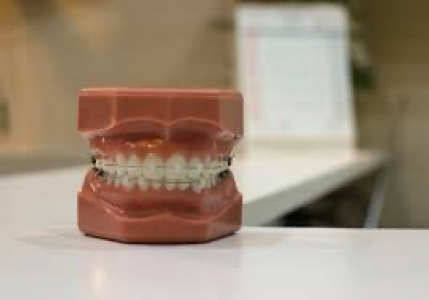
(Source)
Orthodontists study further for more than two years to gain extensive knowledge and practice advanced methods to treat their patients.
They learn about the development of the face, jaw alignment, teeth alignment, jaw growth, braces, and so on.
What Do Orthodontists Do?
Orthodontists are dentists who are experts in jaw and teeth alignment. Thus, they are able to perform additional surgical and treatment procedures on their patients that yield positive results.
They can also diagnose and treat dental conditions, but they focus on correcting the positioning of teeth and jaws of their patients. They perform some of the treatments mentioned below:
- Braces application and management
- Retainers and medication
- Teeth-Straightening surgeries
- Malocclusions (misaligned jaw and/or teeth)
- Application of dental appliances, such as orthodontic headgear, Herbst appliances, palatal expanders, etc.
- Supervising the facial growth in children and adult after an accident or reconstructive procedure
What Problems Does Orthodontia Treat?
Every patient has a set of teeth that is unique to them and requires orthodontic treatment methods to rectify any common problems using variations in technique.
Fortunately, there is a wide scope and range of treatment options as orthodontists specialize in correcting these issues. Here are some of the common orthodontic problems that orthodontists deal with in their patients.
- Cross-bite – It occurs when the lower tooth (or teeth) falls over to either side of your jaw and outside the upper teeth’ arch.
- Deep-bite – It is the form of overbite in which the upper teeth almost completely cover the lower teeth when you close your bite.
- Over–jet – occurs when the front of the upper teeth sit over the lower teeth in such a way that there is a horizontal gap in the upper teeth.
- Open–bite – It is the lack of contact (meet) between the front of the lower and the upper teeth sets (upon bite), which can result in adverse effects on the back teeth.
- Tooth Wear – Teeth can wear out due to multiple reasons, such as eating, aging (i.e., weakening of structure), acidic foods, etc. Did you know that grinding teeth can also result in erosion?
- Protrusion – refers to front teeth setting outwards at an unusual angle. Consequently, there can be gaps between the top and lower teeth.
- Periodontal Diseases – Treating gum diseases such as gingivitis is the specialty of many orthodontists.
- Crowded/Spaced Teeth – Crowding occurs when the teeth fight to take up space on your jaw. This means that a tooth might have erupted at an unusual angle and is now disrupting the angular positions of the other teeth causing misalignment. On the other hand, spaced teeth mean that there are excessive gaps between the teeth.
Significant Benefits of Orthodontic Treatment
Here are a few of the many significant benefits that you can receive through orthodontic treatment:
- Enhanced smile and facial appearance after the correction of the bite problems and teeth misalignment.
- Improved chewing and eating ability that results in better digestion and the prevention of any digestion problems.
- Protection of gums and teeth from pain and deformities of the temporomandibular joints –for instance, treatment and elimination of bruxism.
- Better oral hygiene due to ease of cleaning and maintaining straight teeth.
- Lower tooth damage risk after the correction of the bite that results in the elimination of additional chewing and biting pressure.
Importance of Orthodontia
· Orthodontic Care at Early Age
The American Dental Association (ADA) suggests the optimal age for the first dental visit is 7 years. What you should know is that during the early years, the mouth (jaws, gums, teeth) is in the development and growth stage. Therefore, early evaluation from an expert orthodontic can help identify any underlying oral health conditions.
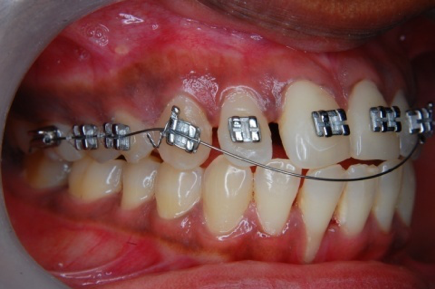
(Source)
· Orthodontic Care in Teenagers
Many orthodontists consider teenage and adolescent years the ideal time to get braces and engage in comprehensive orthodontic treatment. One of the prime reasons for it includes the falling out of all the baby teeth.
Adolescence is also another stage of growth and development of the jaw in children, which makes it easier to conduct orthodontic treatment and effectively rectify any oral misalignments.
· Orthodontic Care at Adult Age
It is never too late to seek general dentistry or orthodontic treatments. In fact, many people consider getting braces and teeth adjustments in old age. Moreover, many adults undergo special reconstructive and cosmetic surgeries to develop better facial growth and improve their appearance.
Orthodontia: Conclusion
Are you struggling with any oral health conditions that can potentially become serious in the future without adequate care? Well, you should reach out to our professional, experienced, and expert orthodontists at NYC Dental Orthodontics.
NYC Dental Orthodontics
20 E 46th St Rm 1301
New York, NY 10017
(646) 760-8028
Reference Links:
https://www.healthline.com/health/orthodontist-vs-dentist#orthodontic-treatments
https://www.colgate.com/en-us/oral-health/teen-oral-care/what-is-orthodontics
https://www.colgate.com/en-us/oral-health/early-orthodontics/what-is-orthodontics
https://en.wikipedia.org/wiki/Orthodontics
https://www.dictionary.com/browse/orthodontia
https://kidshealth.org/en/teens/braces.html
Fixing Crooked Teeth
What are the best ways of fixing crooked teeth? Crooked teeth are common in both children and adults. Often, people with crooked and misaligned teeth become conscious because of the way their teeth appear. Some often avoid dental visits, perhaps to save costs on the dental treatments.
Simply put, there is little to no awareness about the potential complications and health problems associated with crooked teeth. Moreover, who doesn’t want a bright and attractive smile? It makes you look beautiful and boosts self-confidence.
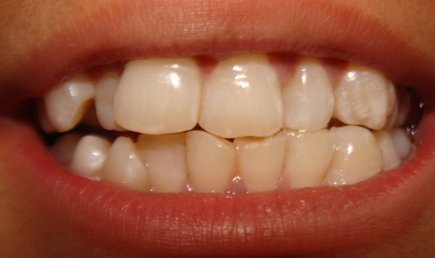
(Source)
Do you want to rectify your crooked and misaligned teeth? If so, then keep reading to learn about fixing crooked teeth.
What Causes Crooked Teeth?
Crooked teeth mainly occur due to overcrowding inside the mouth. Generally, it is one tooth that disturbs other teeth while pushing them back or forth. Sometimes, it is the narrow roof of the mouth that causes a crooked tooth to overcrowd inside the mouth.
All in all, crooked teeth affect the bite, chewing, etc. They also cause misalignment on the jawbone and gums. Here are some of the general causes of crooked teeth.
- Baby teeth problems (extra teeth, missing teeth, or early loss)
- Tongue pushing against the front teeth (poor swallow reflux)
- Big Teeth
- Thumb sucking at an early age (i.e., during infancy)
Complications of Crooked Teeth
Crooked teeth can potentially affect the quality of your life. What most people don’t realize that few general complications can occur due to crooked teeth. Hence, they don’t seek orthodontic dental care and develop other oral diseases.
Self-consciousness: Some people try to avoid smiling in public places to avoid the embarrassment of crooked teeth. Thus, this leads to social awkwardness and a lack of self-confidence
Tooth Wear: Crooked teeth can cause wear and tear on gums and cheek muscles. Moreover, they can also wear the jaw muscles causing jaw pain/strain, chronic headaches, and even temporomandibular joint disorder.
Periodontal Diseases: You may develop tooth decay, tooth-rotting, and gum diseases such as gingivitis if you are unable to clean your teeth efficiently. Crooked teeth make it hard to brush and floss in between and outside. Serious infections can damage the jawbone and gums.
Chewing: Inadequate chewing of food and even several morsels can result in digestive problems.
Talking: Misalignment due to crooked teeth can make it extremely difficult to pronounce some words and sounds properly.
Fixing Crooked Teeth: Treatment Options
Teeth Straightening Surgeries
Teeth-straightening surgeries involve minor surgical procedures that your orthodontist conducts, taking all precautions. It may involve the repositioning of gums and bones inside your mouth in order to improve teeth-holding ability.
Notably, they may help reduce the overall time you have to wear the braces to correct misalignment and crooked teeth by a significant fraction. Orthognathic surgery involves realigning the jaw when the speech and/or chewing are severely affected.
Braces
Invisible
Invisible braces are clear aligners that have a comfortable plastic material to fit perfectly over your teeth. Firstly, your orthodontist will conduct a thorough examination to determine the real shape and size of your teeth. The examination process involves x-rays, impression molding, and 3-D imaging to help the orthodontist create the perfect invisible braces set.
They require frequent change, and you will have to visit your orthodontist so they can refigure the set of clear aligners. They are nearly impossible to notice from medium to close range. Nonetheless, they are more prone to staining.
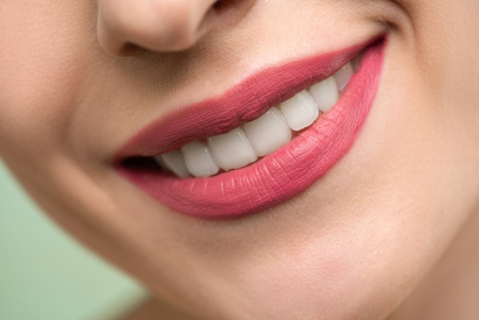
(Source)
Metal
Metal braces encompass the use of metal brackets that your orthodontist will bond to the enamel of every tooth. Subsequently, they will work on the application of the long flexible arch-wire and place an o-shaped elastic band with every metal bracket on every tooth.
The elastic band helps in realigning the teeth with the flexible arch-wire. What’s more, metal braces may be the least expensive than other braces.
Lingual
Your orthodontist will place the same metal braces but on the backside of your teeth. As a result, it makes them difficult to notice. However, you may find it difficult to clean, maintain, and wear them for long periods than the traditional metal braces.
Ceramic
Ceramic braces are similar to metal braces in terms of procedure, management, and results. However, they are relatively more expensive due to the tooth-colored appearance of the brackets and the arch-wire that surrounds the teeth.
Additionally, they are more prone to staining and are less durable.
Fixing Crooked Teeth: Conclusion
Do you have crooked teeth and searching for the best orthodontic treatment for them? Look no further. Here at NYC Dental Orthodontics, we can offer solutions to all orthodontic problems.
When it comes to crooked teeth or other similar oral health conditions, our expert orthodontists are capable of delivering optimal and effective treatment results.
Give us a call at (646) 760-8028 to discuss the treatment options for crooked teeth.
Reference Links:
https://www.healthline.com/health/dental-and-oral-health/crooked-teeth#takeaway
https://www.colgate.com/en-us/oral-health/adult-orthodontics/what-causes-crooked-teeth
https://www.ncbi.nlm.nih.gov/books/NBK553375/
https://www.sciencedaily.com/releases/2019/06/190613095229.html
Tooth Anatomy
The anatomy of the tooth is complicated despite looking so simple on the surface. There are actually different parts that make up the tooth anatomy, all of which have different functions. Consequently, it is important to know the anatomy of the teeth, even if you’re not a dentist. This way, you will be aware of certain issues that could affect your teeth. Consequently, you’ll be more careful next time. If you want to know more about the anatomy of a tooth, read further below.
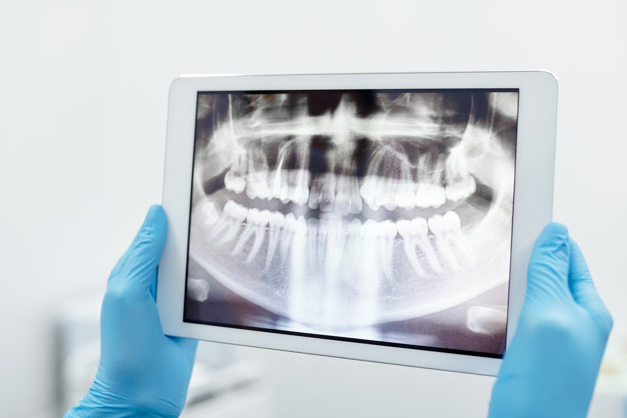
(Source)
The Structure & Functions of the Teeth
As mentioned above, there is more to tooth anatomy than the hard exterior surface. There are different parts that make up a tooth, and here is what you should know about them.
The Crown of a Tooth
The crown is the part of your tooth that is visible to you, and under it are different parts. It has a white-yellow shade, depending on the enamel and thickness. The first part of the crown is the anatomical crown, which is the top portion of your tooth. The anatomical crown is usually the portion you can see on your tooth. Next comes the enamel, which is basically the outmost layer of your tooth.
The enamel is one of the hardest tissues in your body. It acts as a shield when it comes to bacteria getting on your tooth. This portion also helps make your teeth stronger, so you can put more pressure when you chew on something. The last part of the crown is the dentin. This is below the enamel and includes a layer of mineralized tissue. The dentin goes all the way down the neck and root while passing the crown. The main function of this is to prevent extreme heat or cold from damaging your teeth.
The Root
The root is an important part of your tooth as it helps keep your teeth in place. The root extends into the bone of the teeth and helps hold it in place, taking two-thirds of the tooth. Several parts make up the root:
- The Cementum- This parts helps cover the tooth and is connected to the periodontal ligament
- Nerves and Blood Vessels- The nerves help control the force you use to chew, while the blood vessels transport nutrients to the periodontal ligament.
- Periodontal Ligament- This part consists of connective tissues and collagen fiber, connecting the teeth to its tooth sockets.
- Root Canal- This is the passageway containing the pulp
- Jaw Bone – This is the bone that includes tooth sockets surrounding the tooth’s roots.
The Dental Cervix
The dental cervix, also known as the neck, appears between the root and the crown, forming a line where the cementum and the enamel meet. The dental cervix consists of three parts, the pulp, gums, and pulp cavity. The pulp contains many tiny nerves, tissue, and blood vessels and is the innermost portion of your tooth. The gums, also known as the gingival, are soft, pink, and fleshy connective tissue attached to the dental cervix and the cementum. The pulp cavity, also known as the pulp chamber, is situated inside the crown and usually contains the pulp.
The Different Types of Teeth
As you’re already aware, once you step into adulthood, you have a total of 32 teeth. These don’t include the wisdom tooth. As you grow, the number of teeth changes. A toddler has the least teeth compared to an adult. On the whole, there are four types of teeth, and each of them has a different function when speaking, eating, or drinking.
The Four Different Types of Teeth Are:
- Premolars: These are two pointy teeth on each side that help you bite your food into pieces
- Molars: There are the various points on the top part of your teeth that help you grind and chew your food
- Incisors: There are chisel-shaped teeth that help you to cut up your food
- Canines: Are pointy teeth that help you to crush food
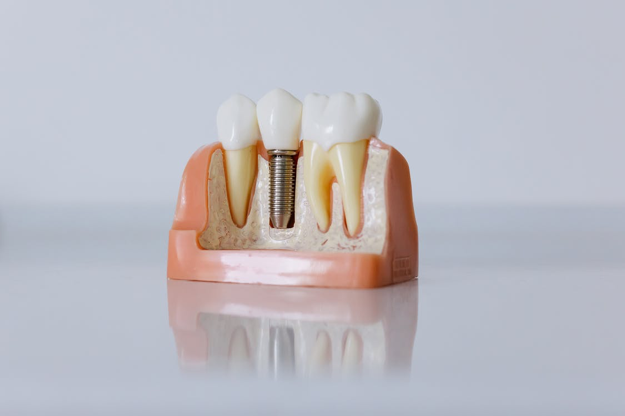
(Source)
Dental Issues
Now that you know about the anatomy of a tooth, you probably understand how crucial it is to look after your teeth. This means properly brushing, flossing, and making dentist appointments to avoid dental issues. Dental issues can grow complicated with time if you don’t treat them properly. A few common dental issues:
- Pulpitis
- Abscess
- Malocclusion
- Cavities
- Periodontal Disease
- Tooth Erosion
- Bruxism
Tooth Anatomy: Takeaway
Knowing the anatomy of a tooth can help you understand dental issues and how they progress in severity. More importantly, the knowledge can give an indication as to how you should address dental problems.
If you need any guidance on your dental health and want to meet a top NYC orthodontist, get in touch with NYC Dental Orthodontics today.
Differences Between Dentists and Orthodontists
What are the differences between dentists and orthodontists? Dentists and orthodontists are both essential to maintaining the oral health of their patients. But they provide care in different methods. A dentist specializes in treating your gums, teeth, jaws, and nerves. However, orthodontics specializes in dentistry and focuses on occlusion, correcting bites, and straightening teeth.
What Services do Dentists Provide?
Dentists take care of oral health. They study in a pre-medical or pre-dentistry college. Afterward, they graduate from a graduate school of dentistry. The dentist also undergoes much practice before they receive their certification. Around 80 percent of dentists pursue their careers in general dentistry.
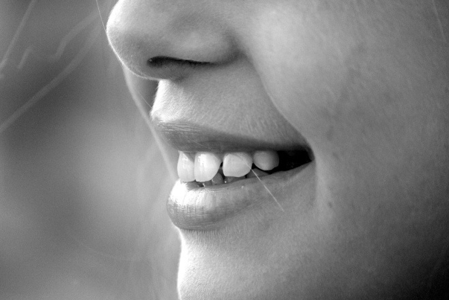
(Source)
You can visit a certified dentist for the diagnosis and treatment of your oral health. These health conditions could be regarding your mouth, tongue, gums, and teeth. Even though dental hygienists focus on cleaning the teeth, you can also visit the dentists. Below, you will find some tasks that a dentist performs:
- Fill and bond teeth
- Fill cavity
- Conduct dental X-rays
- Extract teeth
- Repair cracked teeth
- Treat gingivitis and other gum diseases
- Promote oral hygiene and oral health
- Prescribe treatment do oral health conditions
- Whitening the teeth
- Perform oral surgery
- Install veneers or crowns
- Oversee the growth of the children’s teeth
Reasons to See a Dentist
Keep in mind that it is essential to visit a dentist every six months. Here are some reasons to visit dentists:
1. Preventive Care
On your visit to your dentist, they will check the risk of dental decay, gum problems, and mouth cancer. When your dentist diagnoses these conditions on your regular visits, you can easily prevent these serious problems. You can also visit a dentist to remove the buildup of tartar and plaque. By eliminating these buildups, you can decrease the risk of gum diseases and tooth decay. Your dentist works with a hygienist and shares tips to maintain oral hygiene at home.
2. Pain or Discomfort
You should visit a dentist when you experience discomfort and pain in your mouth, gums, jaws, and teeth. Furthermore, your neck, face, or mouth might be swelling, or you might be suffering from pain in these areas. In these particular cases, you might have a serious dental problem. Therefore, it is important to immediately visit a dentist. Also, you might be bleeding from your gums or have trouble chewing. These issues could be serious, which is why you should consult a dentist and share the problem with them.
3. Maintenance and Health
If you recently underwent surgery, make sure that everything is fine. Sometimes, after dental surgery, you will develop different problems. Therefore, you should visit your dentist after surgery, so they can assess your current condition. Also, you can visit a dentist for a diagnosis of your health. These visits are especially important if you are pregnant, suffering from any medical condition, and use tobacco. They will diagnose your risk factors similar to a medical doctor.
What Services Does an Orthodontist Provide?
Orthodontists also help you with your oral conditions. They are a type of dentist responsible for jaw and tooth alignment. They have further specialization in dentistry. You can visit a certified orthodontist to make sure your teeth and jaw are correctly set. They will diagnose and treat your oral condition related to mouth, gums, and teeth. Here are some tasks that orthodontists perform:
- They create treatment plans including retainers and braces
- They diagnose and provide treatment for misaligned jaws and teeth
- They perform surgery to straightening your teeth
- They supervise facial growth in children such as jawline and bite
- They install dental appliances such as palatal expanders, braces, appliances, or orthodontic headgear.
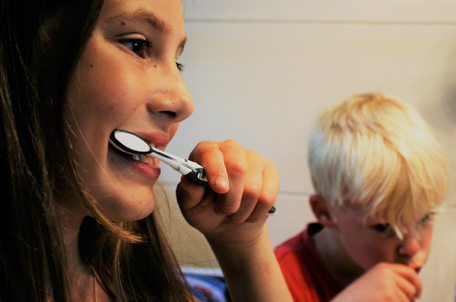
(Source)
Reasons to See an Orthodontist
1. They are also Dentists
When a dentist completes their dental school, they become an orthodontist by specializing. Dentists and orthodontists both practice general oral care. However, orthodontists also access, prevent, and treat dental and facial irregularities. An orthodontist has a lot of patients for orthodontics; therefore, they don’t have enough time to practice general oral care.
2. Straighten Teeth
You can visit an orthodontist to reshape your crooked teeth. They will place braces on your teeth to straighten them. These treatments are effective for children because their jaw is growing. Because the age of seven is the ideal age for the growth of the jaw, you should get your child diagnosed during this time. An orthodontist will ensure that your child’s teeth are growing perfectly or not.
Differences Between Dentists and Orthodontists: Conclusion
If you want to visit an orthodontist for correcting the alignment and condition of your teeth, contact us today. Our expert orthodontists will provide orthodontic services with advanced tools and dental expertise. They will diagnose the condition and correct your dental health condition.
NYC Dental Orthodontics
20 E 46th St Rm 1301
New York, NY 10017
(646) 760-8028
Differences between Children’s Teeth & Adult Teeth
Ever wonder why humans have two sets of teeth? That’s because of the differences between children’s and adult teeth. The first set of teeth, known as milk teeth, are temporary and begin to emerge around six months of age. By the time children are around three years old, they will have all their milk teeth. These teeth start falling out around the age of 5 or 6 to make way for adult teeth.
Adults have 32 teeth, while babies have 20, but that’s not the only difference. There are many other differences between a child’s and an adult’s teeth. It is important to know the difference because while both need proper care, the type of dental care differs. Mentioned below are all the differences you will come across between children and adult teeth.

(Source)
The Main Differences between Children and Adult Teeth
Mentioned below are a few differences between children and adult teeth:
The Level of Strength
For starters, adult teeth are stronger than milk teeth. Permanent teeth usually have a thick layer of enamel, which makes them less prone to dental issues such as cavities and tooth decay. Children have softer teeth with thinner enamel. Consequently, their teeth are highly susceptible to damage by bacteria, which can cause cavities and tooth decay.
The Number of Teeth
Another main difference between children and adult teeth is the number of teeth. Children usually only have 20 teeth, and these start to erupt around six months of age. On the other hand, adults have a total of 32 permanent teeth.
20 Teeth That Children Have:
- 4 Second Molars
- 4 First Molars
- 4 Lateral Incisors
- 4 Central Incisors
- For Cuspids
32 Permanent Teeth That Adults Have:
- 4 Central Incisors
- 4 Lateral Incisors
- 4 third Molars
- 4 Second Molars
- 4 first Molars
- 4 first bicuspids
- 4 second bicuspids
- 4 Cuspids
The Color
You will always find baby teeth whiter and brighter compared to adults with permanent teeth. You will only be able to notice the color difference in children’s teeth once their baby teeth fall out. Sometimes, the color depends on the way you brush and maintain your teeth. But if you take a close look at a child’s teeth, you will notice a white milky texture.
The Shape and Size
Children’s teeth start with incisors that have flat edges and are smaller in size compared to adult teeth. You will notice a child’s tooth is more square-shaped. While adult incisors have more rounded biting edges and also have three ridges right on the biting edge. The ridges are also known as mamelons, and while the teeth erupt, it becomes easier for them to break through the gums. Adults with molars have deeper valleys and grooves along the surface where you chew. Meanwhile, children’s teeth don’t have noticeable grooves and are very shallow instead.
Differences Children’s Teeth & Adult Teeth: Purposes of Each
Children’s teeth have a different purpose compared to those of adults. Both types of teeth share similar functions when it comes to eating food and trying to speak. The purpose of baby teeth is to maintain the spacing of the jaw for your adult teeth to have more room to erupt into the right position. Consequently, children’s teeth gradually disintegrate, and the teeth fall out. The main purpose of adult teeth is to keep the mouth functioning properly. They can do so because of their increased strength. Adults have to take extra care of their teeth to improve their longevity.

(Source)
What Are the Other Purpose of Children’s Primary Teeth?
Though primary teeth aren’t permanent, it is still important to take care of them. Teaching young children to look after their teeth helps them develop better brushing and flossing habits that they will continue as they grow older.
Whenever a child eats, it causes harm to the gum, so by protecting your primary teeth, you are also preventing certain gum diseases and tooth decay. Children’s teeth are at a lot of risk as they are not permanent. Hence, you have to do everything you can to protect them till they all fall out and permanent teeth start growing.
Children’s teeth also act as spacers until the permanent teeth are ready to erupt. Losing baby teeth before the eruption of a permanent tooth could lead to many spatial problems. You will struggle with this once adult teeth develop. The important thing to remember is that just because children’s teeth aren’t permanent doesn’t mean they’re not important. Children’s teeth are more like base starters for permanent teeth.
Differences Children’s Teeth & Adult Teeth: Final Words
Now that you are aware of the difference between a child’s teeth and adult teeth, you’re better equipped to take care of them by keeping them safe and clean.
For the best orthodontic consultation, get in touch with NYC Dental Orthodontics in New York City.
NYC Dental Orthodontics
20 E 46th St Rm 1301
New York, NY 10017
(646) 760-8028
Cost of Braces for Kids
What is the general cost of braces for kids? Many factors affect the cost of braces. For beginners, you should know that a service might be expensive where you live, while the same service may be affordable and cheap somewhere else.
Besides the location factor, there are other factors that affect the cost of braces for kids. As kids and adults both deserve the best dental care, the factors determining the cost of braces for both are similar. They include the level of teeth alignment and distance, types of braces, and the method of fee payment.

(Source)
A general annual survey of 2018 from the American Dental Association shows average braces costs range between $5,000 and $6,000.
Braces for Children- The Right Age and Cost Factor
According to the American Dental Association, children or adolescents get their first set of braces during the ages between 8 and 14. While most people think braces for kids are more expensive, adults’ braces cost more. This is because the children are in the development and growth stage. Therefore, they don’t have to wear the braces for as long as adults do.
Keep in mind, the longer the braces are in place (i.e., you wear them), the more expensive they get due to the frequent checkups and appointments with your orthodontist. The reason behind adults having to wear braces for long periods is that their jaws are fully developed.
Hence, the movement of teeth is painful, and it takes the braces longer to adjust your teeth and align them to fix your bite. A 2018 review suggests that the average treatment period with braces is closer to 20 months. In addition, did you know that most healthcare insurance providers are more likely to cover braces for children than adults?
Initial Cost
The initial costs of the braces include your child’s first appointment with an experienced orthodontist. Normally, experienced orthodontists charge more fees than the ones with less experience. However, in some cases, your child might get the best dental care and braces at affordable costs.
It is the cost of the equipment and the time that an orthodontist spends to examine your child’s dental condition and oral health. They may perform 3-D imaging, X-Ray scans, and impression molding.
The impressions help the orthodontist to determine the best course of action and treatment plan for your child, considering how crooked the teeth are.
Types of Braces Your Child Gets (Cost Factor)
What type of braces you choose for your child also influences the total cost of orthodontic care and treatment. For instance, below is a comprehensive list of the types of braces that children may receive during their orthodontic treatment.
Traditional Metal Braces
Traditional metal braces are the go-to option. However, they involve the application of metal brackets that the orthodontist bonds to the enamel of every tooth.
Further, they have an o-shaped elastic band that helps in readjusting the teeth’ position after fixing with the long flexible metal archwire. They may be the least expensive but are highly noticeable.
Ceramic Braces
Similar to metal braces, ceramic braces use the same technique. However, the slight difference is the latter is less noticeable. However, ceramic braces are more expensive than metal braces.
Lingual Braces
Lingual braces are an alternative to metal braces that are hardly noticeable. However, your child’s orthodontist applies them behind the teeth. They are invisible unless someone closely looks at you, and that’s why they are one of the most expensive braces in the market.
Invisible Braces
Invisible braces are transparent, constituting a mixture of medical plastics that go over your teeth. These are clear braces that your child’s orthodontist might easily craft after taking impressions and 3-D images.
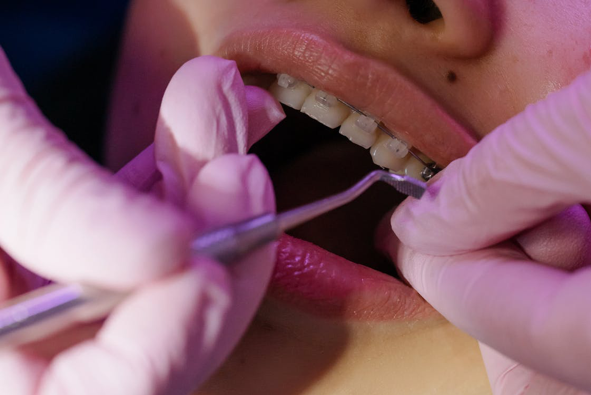
(Source)
Keep in mind that they require frequent changes as the teeth change position and start to realign. Thus, your child might have to switch between different pairs of better aligners every few weeks.
Other Cost Factors
Some other factors may also influence the level of orthodontic treatment that your child receives and the cost it incurs. They include:
- Age
- Time-period for which the child needs to wear the braces
- The Experience of your orthodontist
- Management and care of your child’s braces
Cost of Braces for Kids: Conclusion
The factors above will determine the cost of braces for your kid. However, waiting unnecessarily and delaying a visit to the dentist can add to the total healthcare cost. Contact NYC Dental Orthodontics for the best treatment at affordable costs.
Give us a call at (212) 207-8028 to schedule an appointment with one of our experts today. Get your kid the braces and orthodontic treatment that will not only help them maintain oral health but also a bright smile.
NYC Dental Orthodontics
20 E 46th St Rm 1301
New York, NY 10017
(646) 760-8028
References & Related Links:
https://www.fatherly.com/parenting/braces-orthodontics-costs/
https://www.colgate.com/en-ph/oral-health/early-orthodontics/how-much-do-braces-cost-for-kids-1014
https://www.colgate.com/en-my/oral-health/early-orthodontics/how-much-do-braces-cost-for-kids-1014-
https://www.healthline.com/health/lingual-braces-2
https://www.healthline.com/health/average-cost-of-braces
Braces for Baby Teeth
Are there braces for baby teeth? Normally, when we hear the word “braces,” the first picture that comes to our mind is a late teen or a mid-teen. However, orthodontists may recommend braces for people of different age groups, including children, adolescents, teenagers, adults, etc.
Did you know that there are braces for baby teeth? Yes, they are safe, but you need to consult with your child’s orthodontist. Visiting an orthodontist early is better for the identification and diagnosis of harmful oral conditions that may become a serious concern if left untreated.

(Source)
Braces for Kids with Baby Teeth
Everyone wants a bright smile, but not all people have pearly whites. They include young children as well as adults. The perfect alignment of teeth and the bright color make your smile beautiful and boost your self-confidence. However, people with crooked, misaligned, and crowded teeth growth need to undergo dental treatment to maintain their proper bite.
Many people assume that late age is more suitable to get braces and other similar treatments than the baby teeth stage. In fact, it might be the best time to rectify oral errors and misalignments.
It becomes easier to handle the teeth realignment and maintain the proper bite when a child has baby teeth. As their jaw and bones are still under development, orthodontists recommend that it is easy to guide the growth and adjust the treatments accordingly.
The American Orthodontic Association suggests that dental care becomes vital when dental issues become visible in children. Besides, they suggest that the first dental checkup should not be before 7 years of age. It is the growth and development stage of a child, and it is possible only for a trained and experienced medical care professional (i.e., orthodontist) to identify the subtle signs of any underlying or potential oral health issues.
Advantages of Braces for Kids with Baby Teeth
An orthodontist might take a look and conduct an examination to assess your child’s oral health conditions. Eventually, the answer may be one of the following.
- Initiating treatment before the eruption of permanent teeth
- Waiting for the permanent teeth to grow for better treatment success
- Suggesting that there is no need for any orthodontic treatment at the instance
Reasons to Get Braces for Kids with Baby Teeth
Did you know that an orthodontist might suggest extracting your child’s baby teeth to give way to permanent teeth growth?
Here is a list of a few oral health conditions that require prompt orthodontist attention.
- Spaced/Crowded Teeth: crowded teeth grow too close and misalign other teeth surrounding them. In comparison, spaced teeth are far apart and keep growing in a similar pattern even when the permanent teeth erupt.
- Underbite/Overbite: underbite is when the upper teeth are far behind the lower teeth, while overbite is when the upper teeth are far ahead of the lower teeth.
- Extra/ Missing Teeth: it is possible for young children to have missing or additional baby teeth that are capable of impacting their future jaw growth.
- Crossbite: crossbite pertains to the shifting of the jaw of a child to either side.
Types of Braces for Kids
Children with baby teeth require precise care and need to undergo accurate treatment procedures to avoid any permanent deformities.
- Traditional braces have metal brackets and a long, flexible archwire. The metal brackets bond to the teeth’ enamel while the flexible wire fastens them to begin the readjustment. A similar process applies to the ceramic braces, which are tooth-colored and not-so-frequently noticeable.
- Many brands offer invisible braces. These are plastic braces that fit perfectly over your teeth after your orthodontist creates them with your mouth’s precise 3-D image and/or impression (mold). It’s rubber and does not involve wires or metal brackets.
- Often the orthodontist will suggest that your child get one or two teeth pulled in order to get space for the headgear that can provide better teeth adjustment force. Nevertheless, you do not have to worry because your child might only have to wear the headgear at night.

(Source)
After the application of braces, you need to visit your dentists frequently until the teeth are finally in the correct position. Following that, they will remove the braces and suggest wearing plastic retainers that will hold the teeth from moving back to the same place.
Braces for Baby Teeth: Conclusion
If you want to consult one of the best orthodontists for your child, then look no further. At NYC Dental Orthodontics, we have the best orthodontists in NY. We deliver not only effective treatment but compassionate care that will relax your child in a friendly environment.
Give us a call to schedule a consultation with one of our orthodontists.
NYC Dental Orthodontics
20 E 46th St Rm 1301
New York, NY 10017
(646) 760-8028
References & Related Links:
https://kidshealth.org/en/parents/braces.html
https://www.mayoclinic.org/tests-procedures/braces/expert-answers/dental-braces/faq-20058192
https://kidshealth.org/en/kids/braces.html
https://www.nhs.uk/live-well/healthy-body/braces-and-orthodontics/
https://www.aaoinfo.org/blog/parent-s-guide-post/importance-of-orthodontics/
All About Straightening Teeth
Want to know about straightening teeth? Crooked or misaligned teeth are a major orthodontic problem, and they are one of the reasons patients require teeth straightening treatments that are most commonly available at orthodontic clinics. There are many reasons why you would your teeth straightened, besides improving your smile and appearance. Braces are a common way to straighten your teeth. However, you can get the job done in a few other ways as well. Mentioned below are the different ways you can get your teeth straightened, along with other necessary information.
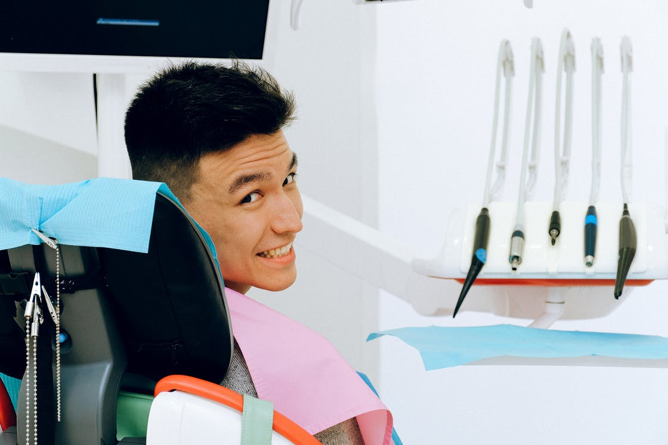
(Source)
The Different Ways to Get Your Teeth Straightened
Braces
Braces are among the main ways to keep your teeth straight. The term derives from ‘brace,’ which is a dental device used to fill in the gaps between crooked teeth. At the same time, they help align the teeth. Braces are an orthodontic treatment, for which you need to consult a professional orthodontist. The orthodontist will place the brace on your teeth by adjusting the right pressure and position them correctly. You have to wear these for at least two years for your teeth to achieve proper straightening. The duration of how long you leave your braces on depends on the type of braces you wear and how much straightening is needed.
If you plan on choosing braces as a means to straighten your teeth, you can choose from four different types. The different types of braces include ceramic braces, metal braces, lingual braces, and Damon braces.
Retainers
In case the thought of braces seem scary, rest assured that they’re not the only way to straighten your teeth. You can also opt for retainers, which your orthodontist usually recommends right after removing your braces. Retainers are wire-based dental accessories that you can wear overnight. Or, you may have to wear them continuously, depending on the type of retainers you’re going for. You need teeth correction for retainers to have an effect. It is possible for retainers not to work if your teeth require heavy straightening. Retainers are the best alternative for those who don’t want to get braces.
Aligners
Aligners are a great alternative to braces when it comes to teeth straightening. These are transparent, customized mouthguards that act like braces and slip right over your teeth to bring them in the right position. The best part about aligners is that they are not visible, so you don’t have to worry about an odd appearance.
Other than that, this treatment is very efficient and fast, and you may see good results in no time. If you plan to buy aligners, you will likely come across the industry leader Invisalign®.
Teeth Straitening Kits
Teeth straightening kits are another way to help straighten your teeth. These are a very reasonable option because you don’t have to visit the dentist for this option. You can get the kit delivered to your house. The kit includes a treatment plan that helps straighten your teeth. Before you plan to get a treatment like this, it is best to discuss it with your orthodontist and check if it is the right treatment for you.
Mewing
If you are all about natural techniques, you can try out mewing. You can try it out at home. Mewing is the technique of flattening out your tongue against the roof of the mouth. Over time, the movement is said to help realign your teeth and define your jawline. Mewing may help expand the palette and might work if you have overcrowded teeth. However, there is still much more research needed on the effectiveness of this treatment.
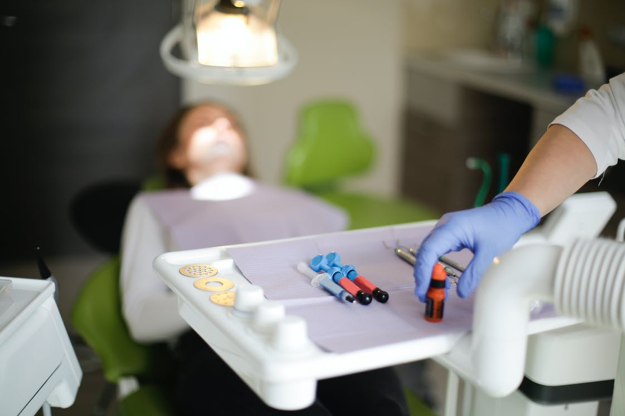
Benefits of Straightening Teeth
For many people, teeth straightening may not seem like a necessary process, especially when they get to know the amount of treatment required. However, there are a few benefits of teeth straightening that may encourage you to get one. One of the main benefits is that it improves your gum health by creating a strong barrier against periodontal diseases. When you have crooked teeth, it becomes very difficult to clean all the food bits and plaque, which could lead to different gum diseases. You also get to achieve a better facial appearance and can smile without feeling conscious about the way your teeth look.
Straightening Teeth: The Conclusion
Now that you are aware of teeth straightening and the different ways you can do so, it’s time to consider one for yourself. You will first need to see if you require it, and an orthodontist will help you out.
For the best orthodontics services in NYC, contact NYC Dental Orthodontics right now!
NYC Dental Orthodontics
20 E 46th St Rm 1301
New York, NY 10017
(646) 760-8028
All About Dental Retainers
Dental retainers hold your teeth in place, usually after you get braces to realign the teeth. These are custom-designed and effective for keeping the teeth intact after reshaping. It is not easy for many people to wear a retainer, but it is worth it and very effective. You will realize this once you see the end result of wearing one. If you plan on getting retainers and want to learn more about them, stick around and read this article further!
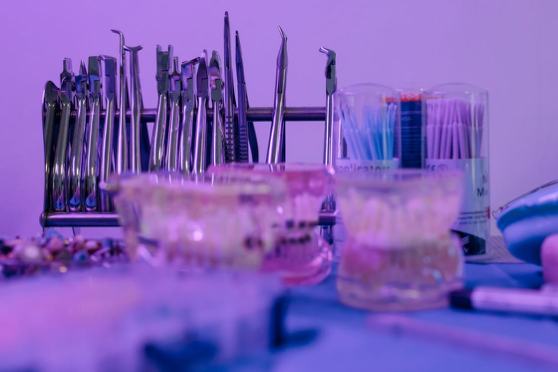
(Source)
What is The Purpose of Wearing Retainers?
When you undergo orthodontic treatment, such as getting braces, getting retainers becomes all the more important. For orthodontic treatment to work effectively, you need to wear retainers. These help retain the new position of your teeth, which can change during braces treatment. The same goes for when you wear clear aligners; you will need to wear retainers for your treatment to be successful at the end. If you don’t wear a retainer, you will notice the position changing back to its original state. This means the period that you spent wearing braces went to waste. When your teeth are repositioned, the ligaments and tissues in your mouth need some time to adjust to the new positioning. The ligaments would want to snap back into their old position, along with your teeth. To retain this, you have to wear retainers for a certain period of time.
The Different Types of Dental Retainers
Retainers come in three different types, all of which have a similar function: to keep your teeth in place after repositioning. Depending on your case, your orthodontist will recommend the right type of retainer. Mentioned below are different types of retainers:
Hawley Retainer
Hawley retainers, also known as wire retainers, are easy to remove whenever you want. There are specific times when you must remove them, such as before you eat and whenever you clean them. Of course, just because they’re removable does not mean that you can remove them whenever you want to and end up not wearing them that much. You must make sure to follow the instructions of your orthodontist regarding the number of times you can remove your retainer.
Clear Plastic Retainer
The clear plastic retainer is another type of removable retainer also known as the molded retainer. This retainer has a specific mold that fits right into the new position of your teeth. These ones are becoming more and more popular due to their invisible feature. People don’t usually like it when retainers can be seen on their teeth; hence these invisible ones are the perfect way to get rid of the insecurity of having them seen with retainers on. However, don’t take these retainers as another Invisalign, as that is used only to straighten the teeth, not to prevent them from going out of their new position.
Bonded Retainers
Bonded retainers for the first type of retainers to come in the mix. The retainers are attached to your teeth right after you get your braces removed. These types of retainers help you keep your teeth stable in the position for the initial few months of the treatment. If you get a bonded retainer, you have to wear them at all times and don’t have the freedom to remove them.
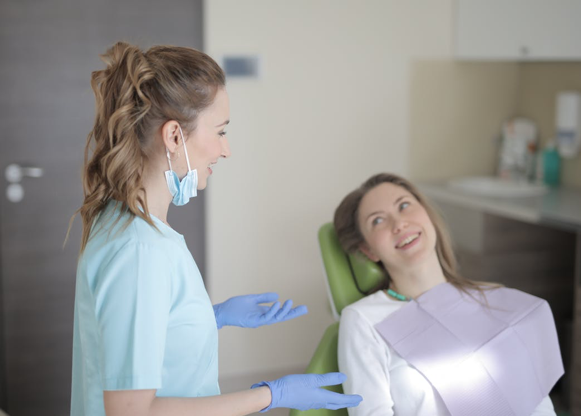
(Source)
How Long Do You Have to Wear Retainers?
Most orthodontists recommend patients start wearing retainers as soon as they remove the braces. There is no time frame till when you can wear retainers as you always have to wear them, but you can get them replaced after a few years. According to many researchers, some patients tend to wear their retainer forever, and this is an indefinite treatment, and it never stops.
When it comes to how many times a day you’re supposed to wear them, this depends on the type of retainer you have. If you have removable retainers, you can remove them a few times; however, with bonded retainers, you will be wearing them throughout. The number of times you wear your retainers might gradually reduce depending on the improvement your orthodontist sees, but this depends on many other factors as well.
Dental Retainers: The Takeaway
Now that you’re aware of what retainers are and the purpose of wearing them, you should get an appointment with an orthodontist and check if you need them. If you recently got your braces removed, you need to start wearing retainers immediately.
Get in touch with the best Orthodontists in NYC by booking your appointment at to achieve the best retainer treatment.
NYC Dental Orthodontics
20 E 46th St Rm 1301
New York, NY 10017
(646) 760-8028
All About Adult Braces
Are adult braces common? Nearly 1.4 million adults received orthodontic treatment in the US in 2014, debunking common misconceptions that braces are only for teens and children. The use of braces for adults is becoming more commonplace, and here we will discuss some of the reasons why.
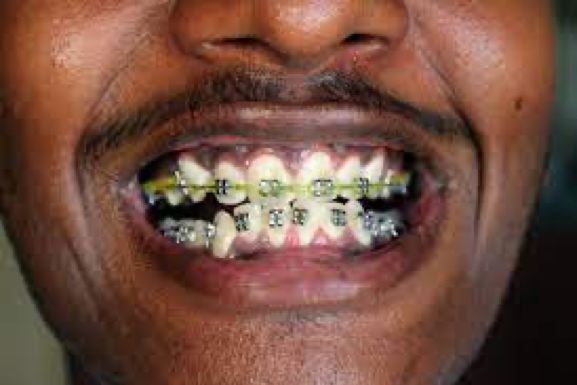
(Source)
Some people have uneven teeth and misalignment that lead to many oral health issues. Degenerating oral health conditions due to crooked and misaligned teeth and/or jaw require you to visit your dentist. Some people focus on reviving their smiling power and appeal. Therefore, adults are seeking the best orthodontic treatments for health and cosmetic reasons.
Complications for Adults Getting Braces
In addition to the many reasons that might make the adult braces difficult during application and post-procedure management, there are other factors. The growth and development of the jaw and gums inside the mouth can make it painful or difficult to install braces.
Many children and adolescents may not wear their braces for extensive periods, and the primary reason for that is that their jaw and mouth are still in the growth stage. Hence, the development makes it easy for their orthodontist to guide the teeth growth and alignment on the jaw.
On the other hand, in adults, the jaw, teeth, and gum are in the mature stage. It means they are permanent and have formed a structure. Therefore, guiding and changing their structure for teeth and jaw alignment get difficult. Occasionally, they wear braces and other similar orthodontic appliances for longer periods.
Types of Braces for Adults
Nowadays, there is an extensive range and types of braces for adults. However, you can narrow down the type of braces you want depending on your oral condition and why you are getting them. For instance, if you need braces for aesthetics, get the ones that are hardly visible and work with other treatments to speed up the results.
Lingual Braces
Like the traditional metal braces, lingual braces help correct teeth and gum misalignment. Your orthodontist will attach the lingual braces to the backside of your teeth, which makes them hardly noticeable.
They are often customizable, but that increases their costs. Still, lingual braces are difficult to clean, maintain, get habitual to, and more importantly, they still involve the need to wear retainers post-treatment.
Traditional Metal Braces
Metal braces consist of a long flexible arch-wire that extends from the last tooth of one side to the last tooth of the other side. An orthodontist installs the metal brackets on one or more teeth as necessary with o-shaped bands to help fix the teeth in their correct position.
They are highly noticeable but are easy to clean, maintain, and require frequent orthodontic appointments to reconfigure the arch-wire setting in the mouth (i.e., when the teeth start moving to the correct position).
Self-Ligating Braces
Self-ligating braces are also similar to conventional metal braces. However, the only key difference is the elimination of colorful o-shaped elastic bands that were previously in use to help correct the tooth’s position.
Now, a single metal door on every tooth helps to hold the arch-wire that enables swift teeth’ movement into the correct position.
Aligners
Aligners are usually plastic and similar material trays that fit right over the teeth (upper and/or lower). They fit perfectly due to the use of 3-D imaging and x-rays. They are expensive, but the price may vary from brand to brand. Some of the invisible braces/clear aligners’ brands offer easy installments after purchase.
What you should know is that these clear aligners might not be easy to accommodate as alternatives to conventional braces. In fact, you have to wear them for no less than 20 or 22 hours a day. You can remove them only when eating and drinking.
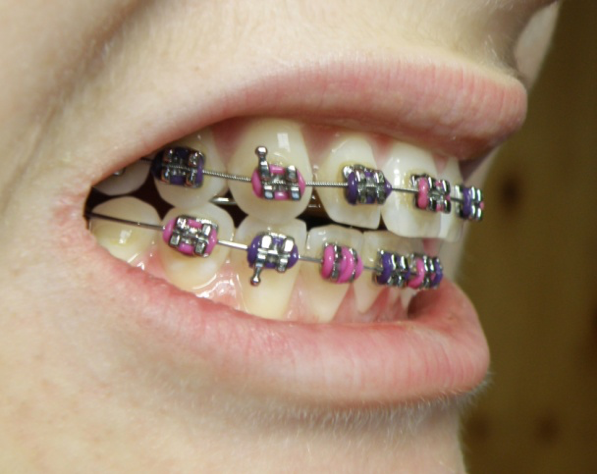
(Source)
While drinking water might be easy, other liquids such as white wine, red wine, juices, or other similar beverages will stain the clear aligners. Hence, it adds to the cost and makes them visible.
How Long Do You Have to Wear Adult Braces?
The average time for wearing braces is around one and a half years to 2 years. However, it will depend on the crookedness of your teeth, the procedure that your orthodontist suggests, etc. Your braces will require adjustment to have them fit on your teeth as they start to move into the correct position every few weeks.
After the treatment is over, you will have to wear retainers to prevent the teeth from falling back into the same place and cause another misalignment.
Adult Braces: Conclusion
Is your smile not reflecting your bright personality? Here at NYC Dental Orthodontics, we have some of the best orthodontists in NYC who excel in the application of various different braces. Furthermore, our staff is compassionate and friendly.
Contact us at (646) 760-8028 to get more information about the different styles and methods of braces that our orthodontists offer. Schedule a meeting with one of our orthodontic experts today. You can also visit our official practice website if you want to know more about braces and other dental procedures.
References & Related Links:
https://www.healthline.com/health/dental-health/adult-braces
https://www.health.harvard.edu/healthbeat/are-you-too-old-for-braces
https://www.bbc.com/news/uk-england-49183879
https://orthodonticsaustralia.org.au/whats-different-getting-braces-adult/
https://www.dollarshaveclub.com/content/story/what-its-like-living-with-adult-braces
What Makes the Best Family Orthodontist?
Wondering what makes the best family orthodontist? Well, there are so many qualities that you will need in a family dentist. Read this article to understand what qualities your orthodontist must possess.
Top Qualities of a Great Family Orthodontist
The following are some essential qualities in a family orthodontist that you need to look for.
Enthusiastic
It’s important to look for an orthodontist who is passionate about their work and always remain enthusiastic. If you find one that has the utmost love for their work, they will help you achieve a happier and healthier smile. This way, you will get happy and relax life.
Not to mention, the enthusiasm of a dentist can be really helpful for you, especially when they are treating your little ones. From toddlers to teenagers, children need a friendly and qualified doctor who can give them the best treatment. Moreover, you also don’t have to face problems like appointment cancelation. These types of orthodontists are more concerned about their patients and feel pleasure in giving regular treatments to their clients.
Attentive
Okay, it’s important that your future family dentist remains attentive during work. Teeth need extra care; hence, your dentist should be attentive and listen to your issues and concerns regarding your oral health. Just imagine what can happen if they take their eyes off from your mouth during any oral procedure? Yes, this can be dangerous. In short, you need to choose a dentist who not only listens carefully but also remains mentally and physically active during any dental procedure.
Compassionate
When you are searching for family dentists, another quality you need to look for is compassion. No matter what your age is, you can have dental phobia or anxiety about oral treatment and routine cleaning. Your doctors should have an eye to catch your nervousness and the ability to calm you down. They should be able to empathize with the patient and show compassion. This way, an orthodontist will be able to treat a patient more carefully.
Trustworthy
This is something not every person thinks. But it is a vital factor to consider. If you think carefully, a dentist is someone you are putting a lot of faith and trust in. Your health problem, whether it is big or small, totally relies on a person who can make it better or worst. So, it’s important to make sure that your future family orthodontist is a reliable professional. Of course, you want to see a dentist who is credible and has a positive reputation.
Affordable
The major reason why people often avoid visiting a dentist is their hefty fees. So you need to look for someone that you can afford. Moreover, some dental insurance companies are infamous for their vicious acts, but a good orthodontist can help you to get proper insurance for your treatments.
Also, some dentists may charge you higher even for routine procedures. They often ask you to go through treatments and take some unnecessary tests only to make money. So, it’s important that you choose someone who is honest with their work and tries to remain affordable.
The Best Family Orthodontist Has Good Online Reviews
Nothing is more reliable than online reviews; personal referral is another great thing. They give you information that you can only get from your personal understanding, as people share their dentist’s experiences. These reviews give you an insight into what to expect from that dentist; it would help you decide whether you should choose them. If you get an option to comment in the review section, you can also ask for more details about the orthodontist.
Practical Experience
An orthodontist who is in practice for at least a few years should be your choice. Experience in the field, getting the opportunity to work with people of all ages, and treating various oral health problems, makes an orthodontist the best choice. Not only can they give you the best treatment, but also they make you comfortable, even when you have to go through the painful treatments.
Moreover, their ability to understand the oral health requirements of people of different age groups can help your entire family get proper treatment or trust the orthodontist for any dental procedure.
Also, experience makes a person pro in their field, giving them an edge to treat you better than others. A lot of experienced and qualified dentists also treat patients in such a way so that you feel less pain and discomfort.
Best Family Orthodontist: Bottom Line
As you have learned what qualities you need to look in your family orthodontists, you can easily search the best dentist for your entire family. We can also help you to find the right orthodontist. At NYC Dental Orthodontics has the best dentists & Orthodontists in NYC.
We know what is best for our patients and are ready to serve them by all means. Visit our website for more details or call us today at 212-207-8028.
What Services Does An Orthodontist Provide?
What are the different services that an orthodontist provides? Orthodontists hold great importance in the world of dentistry and play a major role in the fixation of our teeth and jaw issues. But these professionals are among the few people many of us never want to see or have contact with. Let’s face it; every one of us has a dental phobia to some extent. We get scared, finding out we have a dental problem that requires frequent visits to the dentist.
It gets scarier when there is a problem that requires dental surgery or any other corrective procedure. But, an orthodontist is the first health professional that you must take your child to around the age of seven to check for any dental issues that may lead to more problems in the future.
If you still haven’t visited an orthodontist or want to learn more about their services, you’ve come to the right place. Many people think that orthodontists only deal with the placement of braces. Well, that’s not the case. Mentioned below are the different types of services an orthodontist provides.
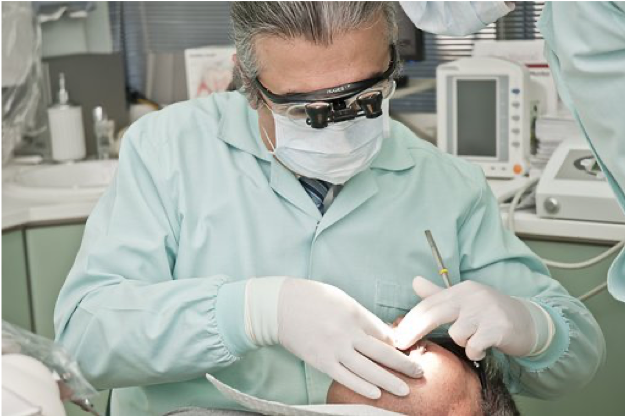
(Source)
1. Installation of Braces
One of the main tasks orthodontists perform is the installation of braces. They also perform some tests and take assessments that let them know if you require braces or not. An orthodontist will recommend braces when you have teeth alignment issues and issues with your gums.
Braces consist of metal wirings and brackets smoothly fixed on your teeth and jaws. It’s one of the best treatments for overlapping teeth, and many children get braces installed during their school years. As dentistry continues to advance in many ways, different types of braces have been introduced, such as ceramic braces, lingual braces, and Invisalign. The installation method of these braces differs slightly and is carefully carried out only by orthodontists.
2. Malocclusions
Malocclusions are a jaw dysfunction that occurs when your jaws aren’t aligned properly. This issue may arise due to many reasons, and you must visit an orthodontist as soon as possible, as they will provide you with the best treatment for it.
Malocclusions appear in different forms. Sometimes your lower jaw tends to be bigger than your upper jaw, known as an underbite. In some cases, your upper jaw is bigger than the lower jaw, known as an overbite. Orthodontists help align your jaws with effective treatment depending on how intense your condition is.
3. Extra Oral Appliances
Other oral appliances consist of the orthodontic headgear installation, a form of dental treatment to correct a severe malocclusion. This headgear is a type of device that gets strapped to your teeth or braces. If your orthodontist recommends wearing these, you only have to wear them during the night. So you don’t have to fear wearing this unique and abnormal (for a few) orthodontic appliance when you go outside.
4. Jaw Surgery
Orthodontists also perform surgeries to fix severe teeth misalignment and jaw issues that help minimize any other deformities in your jaw if present. This surgery includes breaking your jaw bone along with the plates, screws, and titanium to help with the healing. This surgery is mostly carried out under anesthesia. There are many other surgeries that orthodontics conduct to treat misalignment and jaw issues. If the issues are very severe, some surgeries require the assistance of dentists as well.
5. Post Treatment Services – Retainers
Once you’ve received basic orthodontic treatment, your orthodontist will carry out a treatment that includes retainers’ installation. Retainers help increase the speed of the treatment and prevent any further issues to some extent. This dental appliance comes in two forms; removable and fixed.
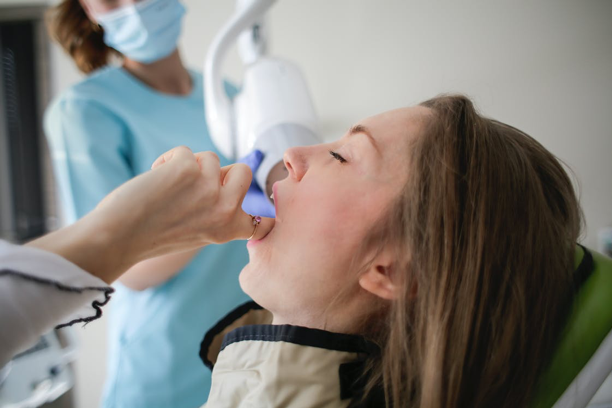
(Source)
Removable retainers help position all your teeth and include clear plastic, so they aren’t as visible as you think. The best part about removable retainers is that you don’t have to wear them all the time, especially when you’re outside because that’s the last thing you want. You have to wear them for a certain period for effective treatment. The time-frame depends on the person’s dental condition and how much they need it to seek immediate healing.
Fixed retainers also contribute to the same purpose; the only difference is that you have to leave them in your mouth for a certain period of time prescribed by your orthodontists. The orthodontist will fix retainers towards the area of your tongue using simple wires and a dental adhesive.
Orthodontist Services: Final Words
Now that you’re aware of the different services that orthodontists provide, and how important it is to visit them to maintain your oral health, the question is to find the right orthodontist for you.
If you’re searching for the best orthodontist, you should contact NYC Dental Orthodontics. We are the best orthodontists in NYC and will provide you with top quality dental services in a relaxed and professional environment.
What is an Emergency Orthodontist?
Do you think you’re in need of an emergency orthodontist? If you’re experiencing dental problems, you visit your dentist as early as you can. But what if you encounter an oral issue on a weekend, holiday, or past midnight? If you experience a serious problem past your clinic’s open hours, you need an emergency orthodontist or a visit to an emergency room.
You should know the difference between a normal dentist issue and an orthodontic emergency. For normal issues, you can wait until morning, and no serious issue occurs if you wait. However, in an orthodontic emergency, you risk losing a tooth or any other health issue. When you are in such a condition, you must visit an emergency orthodontist. But before you encounter such a situation, you need to understand what oral problems fall under orthodontic emergencies.
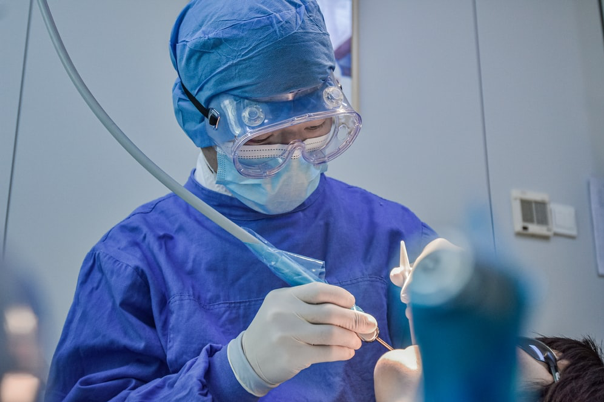
(Source)
Minor Orthodontic Emergencies
Most problems related to your orthodontic treatment will be minor if you can solve it with proper directions over the phone. Still, some minor problems may become an orthodontic emergency. These minor problems can impair your treatment and cause severe discomfort. In such cases, you need to visit an emergency orthodontist so they can diagnose and handle the problem without any further consequences. The following problems constitute a minor orthodontic emergency:
· Broken or Loose Braces
If a bracket, band, or wire of your braces loosens or breaks, you should immediately contact your orthodontist. If the piece from your braces is still intact, avoid touching it until your orthodontist repairs it. If that piece has fallen off, you need to keep the piece with you and bring it to your appointment with an emergency orthodontist. If that piece is causing any discomfort, apply dental wax in that area and visit the emergency room for immediate repair.
· Discomfort from Pointy Brackets, Ties, or Archwires
Sometimes, archwires, the metal, springy, and thin wires on your braces shift from their position and start poking in your mouth. If this is happening to you, use a Q-tip, pencil eraser, or a pair of tweezers to bring it back to a comfortable position. If that doesn’t work, cover the area with the dental wax and visit an emergency orthodontist.
· Toothaches or Loose Teeth
When braces move the teeth, you may feel minor soreness and discomfort in your gums or teeth. This happens to everyone and shows that the braces are working properly. Usually, the discomfort alleviates in few days and becomes mild in intensity. To managing the discomfort, use warm water with salt to rinse out that area. You can also take OTC painkillers such as Tylenol. However, if you cannot handle the pain and notice that the situation is getting worse, contact an emergency orthodontist as this can be a serious issue.
Major Orthodontic Emergency
These types of emergencies are very rare and only happen when there is possible damage to the mouth, jaw, or teeth. Here are some main major orthodontic emergencies that require an immediate visit to the emergency orthodontist:
- Infected or swollen gums or other serious swelling or infection in your mouth
- Any trauma or injury to the face, teeth, and mouth
- Unmanageable and severe pain inside your mouth or face
If you are experiencing such problems, call us at (212) 207-8028 immediately. Our experienced orthodontist will discuss how you can handle the situation and arrange an emergency appointment.
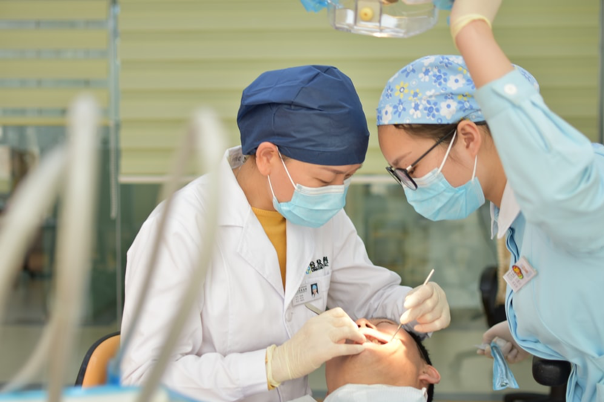
(Source)
How to Know if you Need an Emergency Orthodontist
The American Family Physician suggested that almost 22% of people experience oral or dental pain in only the last six months from the report. This shows how common orthodontic emergencies are in the US.
Still, not all dental situations constitute an orthodontic emergency. Ask yourself the following questions before deciding to visit an emergency orthodontist:
- Is the pain you are experiencing severe? Bleeding and severe pain can be an orthodontic emergency.
- Is your tooth lost? If you seek immediate help from an emergency orthodontist, you can save your tooth.
- Are your teeth loosening up? You should never lose your teeth. Even if you did not feel any pain in losing your teeth, the problem could be serious.
- Do you have an infection? A serious mouth infection can be life-threatening, and you should immediately seek help from an emergency orthodontist. In infections, you may notice knots or swelling around your gum and face.
- Is your mouth bleeding? This is a possible sign of an orthodontic emergency.
Generally, any oral problem that requires immediate help from an orthodontist, such as severe pain, bleeding, a loose tooth, is an emergency.
Emergency Orthodontist: Conclusion
If you are suffering from these symptoms, you need an experienced emergency orthodontist immediately. Call us at 212-207-8028 and describe your condition. Visit us at NYC Dental Orthodontics in New York City.
For further information on how we help our patients, visit our website.
NYC Dental Orthodontics
20 E 46th St Rm 1301
New York, NY 10017
(646) 760-8028
What Are The Different Types Of Kids Braces?
Oral hygiene and taking care of your teeth is very important. Little carelessness can cause many problems for you; it can even lead to some serious health issues. So, it’s important to take extra precautions, especially with kid’s teeth.
Braces are the most common treatment for misaligned teeth. They help you to push the teeth in their actual position. Children can use braces to maintain the alignment of teeth. The good news is that you have plenty of options to choose a kid’s braces. Read the article to know about some common and effective braces to help your little one.
How Do Braces Work?
Both braces and the invisalign process of the orthodontic treatments involve putting pressure on the teeth to place them back in their right position. When your child gets traditional braces, doctors use brackets on the tooth surfaces. Then they put an archwire to apply pressure to their teeth. This wire usually includes small and colorful ties. Whether it is a child or an adult, patients need to visit their orthodontist every six to eight weeks to adjust the wire or place a new one.
What is the Right Age to Get Braces?
There is no age limit for getting braces. It totally depends on individual needs. For instance, children with cleft palates need orthodontic appliances even before the growth of their first teeth.
Other children may need to treat their teeth even before losing all their baby teeth, like around the age of 6 to 7. It’s better to get early treatment to prevent future problems. Also, the early treatment creates a healthy environment that is beneficial for permanent teeth.
Furthermore, some kids who visit orthodontics early may still need braces or other treatments to align the jaw and tooth completely. But they will need less work if they get orthodontic treatment early.
Types of Kids Braces
There are many types of braces that a child can get to bring back the teeth to its natural position. We have mentioned some of the common ones below.
1. Ceramic Braces
You must be familiar with metal braces, also called traditional braces. The ceramic kids’ braces look quite similar to the metal ones. No, you don’t need to worry. These braces are delicate and don’t cause any problems in your kid’s mouth. You can choose any of the following types for them:
- Tooth-colored brackets
- Clear ceramic brackets
- Tooth-colored wires
The best part is they are unnoticeable but are beneficial for your young ones.
2. Lingual Braces
Don’t get confused with its name. These are a little different than the usual ones, just like their names. The orthodontist places these braces inside the child’s mouth. Children who are shy and want to hide their braces can use lingual braces.
3. Invisalign (Invisible Removable Aligners)
Invisalign is a plastic tray aligner that helps you move crooked or affected teeth in the required direction. The best advantage of using them is that they are removable. This means your kid can take them off whenever they want and enjoy sweets without any worry, but of course, in moderation.
Moreover, these braces need to be replaced after two weeks. This helps in the proper teeth movement. However, you also need to know that Invisalign is only great for adults and teens.
4. Self-Ligating Braces
Another choice for kids braces is self-ligating braces. There are several reasons why parents are mostly inclined towards this type of braces. The following are some common reasons:
- The traditional braces use ties and elastic. This leads to continuous pressure or friction on kid’s teeth. Of course, nobody likes the feeling of discomfort and pain, especially younger ones.
- The ties in other braces give spaces for plaque build-up if kids don’t do regular brushing.
- It is hard for kids to keep braces clean.
Fortunately, self-ligating kid’s braces don’t cause any of these problems. These braces are specifically made to address all these issues. As it is without any metal or elastic ties, your young one will not feel discomfort. Plus, they can easily clean their teeth.
Which One Is Best for Your Child?
It’s important to understand that every case is different from others. Also, every child has different preferences. In case of a severe orthodontic problem, your doctor may suggest metal braces for your kid. Or they may recommend comfortable self-ligating braces. So, consult orthodontists like NYC Dental Orthodontics to find out which braces are best for your child. Not to mention, it is better to let the doctors evaluate your child’s teeth and decide the right treatment.
Bottom Line
Now you may get the idea about some common kid’s braces. All of them offer different features that are beneficial for your little one. It’s important to consult experts like NYC Dental Orthodontics, as it is about your kid’s health. We have some best dentists in town who have experience dealing with various dental issues. Book an appointment with us today, as we know which treatment is best for your kid.
To schedule a free in office consulation or online tele-appointment, call us at (646) 760-8028.
What Are The Best Invisible Braces?
The best Invisible braces are the new form of orthodontic treatment that everyone seems to love. People who have to wear braces, but at the same time give more emphasis on appearance prefer this treatment. Most braces come in a metal form, which becomes quite prominent when installed on your teeth and jaws.
Invisible braces include transparent material that doesn’t make it look like you’re wearing braces. However, they’re not completely invisible, but they’re less prominent than metal braces. If you’re considering getting invisible braces any time soon and want to learn more about this new treatment, you must read this article further below.
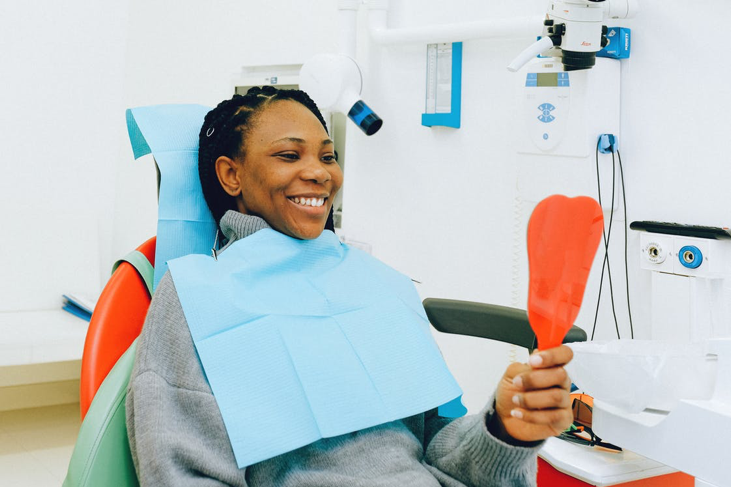
(Source)
The Evolution of Invisible Braces
Invisible braces are among the latest additions to orthodontic appliances and are a very effective treatment. The purpose of invisible braces is to help align and straighten your teeth. These braces consist of clear aligners that don’t include any metal brackets. Plus, the treatment is super effective and simple.
All you have to do is wear the braces over your teeth, and they look natural as ever, giving you the confidence to smile. There are three types of invisible braces available; lingual, ceramic, and clear aligners. These types contribute to the same purpose: leveling your jaws and straightening your teeth.
Invisible Braces Treatment Process
The treatment of invisible braces is not as daunting as you may think; however, it requires you to spend several hours at the orthodontic clinic and take extra care. Before going ahead with the treatment, your orthodontist will first carry out a proper oral assessment using different tests. For instance, your orthodontist will use a 3D Intra-oral scanner to assess the situation of your oral health. These tests will happen regularly, especially after the treatment, to see the progress.
After the check-up, if you’re in dire need of invisible braces, your orthodontist will provide you with a box of clear aligners. You will have to wear them for three weeks or so or as prescribed by your dentist. Your orthodontist will call you up for weekly check-ups to see how effective the treatment is and if it’s working.
You have the freedom to remove the aligner whenever you want to, but it is always advised to wear them as long as you can. The longer you wear them, the more effective your treatment becomes. Usually, orthodontists recommend wearing aligners for 22 hours per day, and you can remove them whenever you’re about to eat or brush your teeth and floss. As you can tell, the treatment is quite simple and perfect for adults who are conscious of their appearance.
How much do Invisible Braces Cost?
Invisible braces treatment is much cheaper than metal braces. However, the cost depends on various factors like the place you’re getting it done from and the intensity of your dental situation. On average, invisible braces treatment costs around $500-$7500. No doubt, this treatment does put a lot of load on the wallet. But many people who are unable to afford, use different health insurance plans to cover certain dental procedures.
Reason Why You Should Consider Getting Clear Aligners
1. Easy Treatment and Procedure
The procedure involved in installing clear aligners is very simple compared to other treatments. Many people find clear aligners convenient as you can remove them whenever you feel like and don’t have to wear them throughout your day to day chores. Unlike metal braces, you can freely move around, carry out your house chores, or visit friends without worrying about how you look with braces on.
2. Ensures Better Hygiene
It becomes quite difficult to carry out your oral health practices normally when you have metal braces on. With clear aligners, you can easily practice your flossing and brushing and can do it as many times as you want. All you have to do is remove your aligners before your daily brushing and easily do it.
3. It’s Invisible!
The invisibility feature is one of the main reasons why you should get clear aligners. This is perfect, especially for those who are too afraid to step outside with metal braces installed and don’t smile properly as they become very conscious.
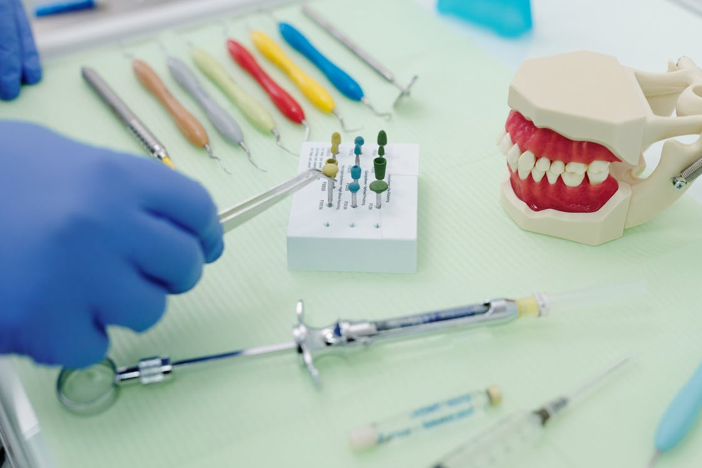
(Source)
Takeaway
Invisible braces might be the best form of treatment for any teeth misalignment issues you may be facing. To discuss treatment options, you should visit a professional orthodontist. This will ensure that you receive the best possible treatment.
If you’re on the lookout for the best orthodontist in NYC, you should contact the best orthodontists in NYC at NYC Dental Orthodontics. Their qualified & experienced orthodontists will provide you dental services with the utmost care. Whether you need invisible braces, dental cleaning, corrective surgery, or any other treatment, we have you covered.
Call us today or visit our website to book an appointment:
(646) 760-8028
What are Ceramic Braces for the Teeth?
Do you need ceramic braces for your teeth? Deciding to get the right braces for you can be quite daunting as we doubt that anyone reading this would enjoy the thought about getting braces. However, braces aren’t all that bad; they help with your treatments and help you achieve much better-looking teeth than before. One of the most common types of braces out there is ceramic braces. If you’re considering getting ceramic braces, you must stick around and read this article further down to learn more.
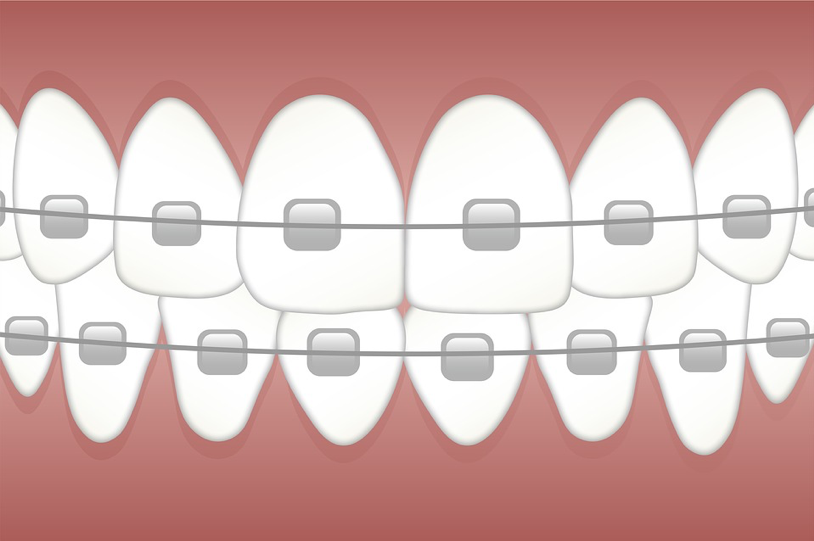
(Source)
Ceramic Braces
Ceramic braces are a type of braces that include tooth-colored or clear brackets, unlike other braces that use wires and metallic brackets. These braces have a much higher demand as they are less visible. Not to mention, when it comes to people choosing braces, people always want the one that looks good and remains hidden. To make it even more invisible, you can get transparent wires, but they’re visible to some extent.
Reasons Why You Should Consider Getting Ceramic Braces
Color Choices Available
Unlike other braces that come in only grey or silver, you can choose your braces or get customized ceramic braces in your favorite color. If you’re the type of person who gives more importance to the appearance and style, ceramic braces are the right choice for you as these braces are available in every possible color. From vibrant colors like pink to subtle colors like brown, you can get any color of your choice.
Invisible Feature
As mentioned earlier, the unique feature of ceramic braces is their invisibility. Unlike other braces, ceramic braces are specifically made out of materials that ensure a specific color or are completely clear. The extent of invisibility differs, but they’re sure less visible than other traditional braces.
Works Faster
If you’re aiming to achieve a faster treatment so that you don’t have to wear braces for a longer period, you must consider getting ceramic braces. Ceramic braces take up a maximum of 36 months to see good results as these braces help move your teeth much faster than other brace treatments like aligners. If you have a severe tooth case, we will mostly recommend ceramic braces as clear-alignment treatments aren’t the best option for cases like malocclusion or misalignment.

(Source)
Not Disrupt Imaging Tests
Braces often interfere with imaging tests like CT scans, MRI, and many more; however, that is not the case with ceramic braces. So you don’t have to worry about getting inaccurate testing results, especially if you get them often.
Reasons Why You May Not Consider Getting Ceramic Braces
May Cause Gum Sensitivity
Ceramic braces may cause gum sensitivity as it can get a bit trickier when it comes to cleaning ceramic braces. These braces have large metal brackets; hence it becomes difficult to clean the brackets properly. Failure to cleaning your braces or maintaining oral hygiene could lead to receding or swollen gums. This is more likely if you cannot brush up to your gum line, which is sometimes impossible in ceramic braces.
Less Durable
It takes almost three years to get your teeth straightened. So, if you want to avoid getting new braces after getting braces installed, you should not consider ceramic braces as they are less durable. Ceramic braces are more likely to fracture or break off than metal braces. You may also experience further damage when it comes to removing the glue, as it could lead to excessive damage to the enamel.
Costly Treatment
If you want to put less load on your pocket, it is best to avoid ceramic braces as these dental appliances are quite expensive than metal braces. You may expect to pay at least $2000 more than you would pay for metal braces.
More Likely to Stain
Ceramic braces are more likely to stain as the elastics attached to the brackets sometimes stain. The worst part is you cannot remove the stains, and the only option is to remove or replace your braces.
Slower Teeth Moving Process
Your teeth move to their original position slower in ceramic braces as these braces are delicate and are more likely to break off at any time. You can get a new set of braces, but it further slows down the treatment process. Hence, it means more dentist visits as your dentist will have to make adjustments that would further delay the straightening process.
Takeaway
Now that you’re aware of ceramic braces and its unique appearance and features, the question is, are they the best option for you? Reading into this article may have helped you make your decision, but you can get an even better understanding by visiting a professional dentist.
You should get in touch with NYC Dental Orthodontics to discuss the best treatments for your crooked, chipped, or misaligned teeth. We have some of the best orthodontics in NYC to assure you a safe and effective dental treatment.
Call Today!
(646) 760-8028
NYC Dental Orthodontics
20 E 46th St Rm 1301
New York, NY 10017
(646) 760-8028
